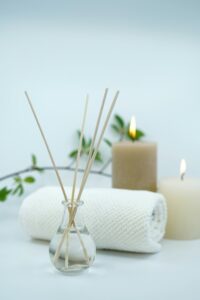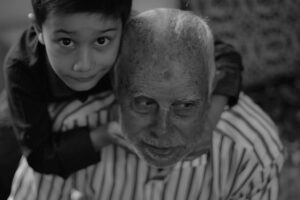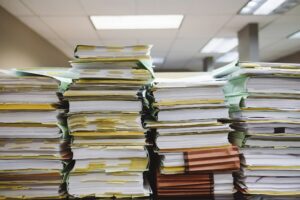Most people who’ve been in the “crunchy” aka “natural parenting world for some time have heard about the amazing properties of breast milk, not just in nourishing babies but also for healing all sorts of ailments, from pink eye to ear infections and diaper rashes, because of the antibodies and other disease fighting aspects within. A friend of mine thinks that the reason her daughter survived cancer is because she nursed throughout chemo.
I’d heard about making soap from breast milk; it’s meant to be be more beneficial than regular soap, with many of the benefits of breast milk, so very healing. It intrigued me, but I hate pumping so didn’t have any to work with. Then someone who I am close with (and trust that her breast milk is safe and disease free) told me that she had pumped and froze milk for her baby who refused to drink milk that had been frozen- the babe wanted only freshly pumped milk, so she didn’t know what to do with all the milk she pumped. I said I’d take it for soap making… and then it sat in my freezer for a while until I finally got around to making it yesterday.
Do I know if the milk retains its properties once made into soap? Nope. But even if not, no harm done and its still good soap.
I made soap with milk one time before- to do so you replace some or all of the recipe with the milk. But last time I made a soap with milk- goat’s milk- it turned a rusty colored. People told me that it was because the milk burned- its best to keep the milk frozen and add it only after saponification.
I’ve been reading a lot in a soap making group and gotten inspired by people’s artistic and beautiful hand crafted soaps, many times using natural ingredients only so I decided to try and make my breast milk soap beautiful, using only kitchen items.
So this time, I plugged my oils into a soap calculator (670 grams canola oil, 740 grams olive oil, 160 grams palm oil, and 930 grams coconut oil- that’s what I had in the house) and it told me that I needed 320 grams caustic soda and 950 grams water (I wanted to make mine extra oily- this is called superfatting- to not dry out skin). But since I had 220 grams of milk, I deducted that from the water amount and used only 730 grams of water. Once saponified, only then did I add the milk. I think it still burned a little, but maybe not.
The instructions for making hold process soap in the crock pot can be found here, but I’ll give a rundown exactly what I did here.
You first heat up your oils to melt them together, then let them cool a drop. While they’re cooling, you put your lye into your water very carefully so it doesn’t splash- I wear disposable gloves while doing this- and mix it, trying not to breathe in the fumes. Once it is fully dissolved, I put it outside- on my window sill with the window closed and let it off-gas and cool off. When cool enough that the container doesn’t burn me when I touch the outside, it’s time to saponify. At this point, your oils should have cooled enough- if you don’t let it cool enough it will erupt out of your crockpot, so let it cool!
I don’t let my kids be in the area from when I mix the lye with the water until the lye is outside, and from when I start saponifying until it reaches trace- about 10 minutes. So though I’ve avoided soap making for years because of kids around I see it isn’t such a big deal- just about 15 minutes total that they can’t be there.
To saponify, I put the warm oils into the crockpot, making sure its not more than 1/3 of the way full. (This recipe was a little too big for my crockpot.)
I then pour in my lye/water mixture carefully, and mix it with a wooden spoon for a minute or two. Then I use a blender stick and mix all over, being careful not to splash, until the texture of the entire thing changes and it all looks like pudding. That is called reaching trace. Depending on the oils you use and their temperature, this take longer or shorter. It took 7 minutes or so for me. Then I added my frozen milk and blended some more.
Once trace is reached, you turn on your crockpot on low, mixing often, until it cooks through. This neutralizes the rest of the lye. If you don’t want to do this part, you need to let the soap cure for a few weeks before it can be used so I hot process.
The way you know the soap finished cooking is that it changes color entirely- from an opaque to a more translucent color.
At this point, you can either put them directly into molds or color them. I put some in molds directly as is, and the rest I mixed with coffee powder to color brown and give scent, and then some of that with cocoa powder to make a darker brown.
I poured it into molds, then used a bent hanger to mix them, giving them a marbled look.
I think they came out beautifully!
I also made a few with lavender flowers I foraged.
Just a note- in terms of coloring- once dried any soap becomes lighter and opaque, so it doesn’t look the same color when hot and when hardened and cooled.
Ever make homemade soap before or consider it? Cold or hot process?
Would you ever make breastmilk soap or use it or hell no?
If you make soap, do you naturally color it? If so, with what?
If you use foraged items in your soaps, which ones do you use, how, and for what purpose?










